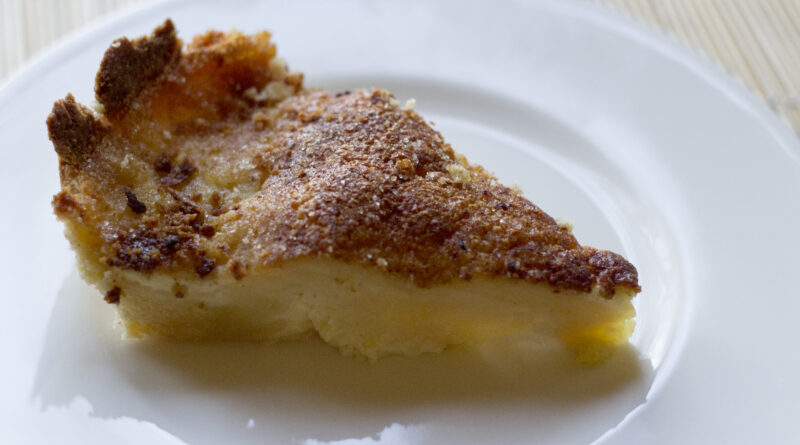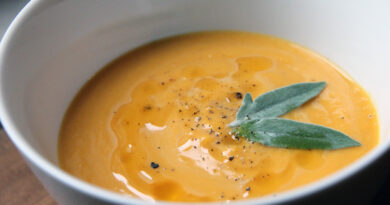Melktert
Melktert: Exploring the Rich Heritage and Irresistible Flavors of South Africa’s Milk Tart
Introduction: In the colorful tapestry of South African cuisine, few desserts evoke as much nostalgia and delight as Melktert, or milk tart. This beloved sweet treat, with its creamy custard filling and delicate pastry crust, holds a special place in the hearts and homes of South Africans, where it is enjoyed as a comforting indulgence and cherished symbol of heritage. Join me on a delectable journey as we delve into the origins, ingredients, preparation methods, and cultural significance of this iconic South African dessert.
Origins and Cultural Significance: The origins of Melktert can be traced back to the Dutch settlers who arrived at the Cape of Good Hope in the 17th century. Influenced by their culinary traditions, particularly the Dutch custard tart known as “melktert,” South Africans adapted and embraced this dessert, incorporating local ingredients and flavors to create their own unique version.
Today, Melktert is a beloved symbol of South African heritage, enjoyed by people of all backgrounds and generations. It is often served at special occasions such as weddings, birthdays, and holidays, where it brings people together to celebrate and indulge in the simple pleasures of life. Its popularity extends beyond South Africa’s borders, with food enthusiasts around the world embracing this delightful dessert as a taste of the country’s rich and diverse culinary heritage.
Ingredients: The beauty of Melktert lies in its simplicity, with just a few basic ingredients coming together to create a dessert that is both elegant and indulgent. The key components typically include:
- Pastry Crust: The pastry crust forms the base of the tart, providing a delicate and buttery foundation for the creamy filling. It is typically made with flour, sugar, butter, and a pinch of salt, rolled out and pressed into a tart pan before being baked until golden brown and crisp.
- Custard Filling: The custard filling is the star of the show, with its rich and creamy texture and subtle vanilla flavor. It is made with milk, sugar, eggs, flour or cornstarch, and vanilla extract, cooked together until thickened and smooth. Some variations of Melktert may also include a hint of cinnamon or nutmeg for added warmth and complexity.
- Cinnamon Sugar Topping: A dusting of cinnamon sugar is the finishing touch that elevates Melktert from a simple dessert to a sublime indulgence. The warm and spicy notes of cinnamon complement the creamy custard filling, adding depth and contrast to each bite.
Preparation: The preparation of Melktert is relatively straightforward, although it requires some time and patience to achieve the perfect balance of flavors and textures. The general method involves the following steps:
- Preparing the Pastry Crust: The pastry crust is made by combining flour, sugar, butter, and salt in a bowl, then kneading until a smooth dough forms. The dough is then rolled out on a floured surface and carefully transferred to a tart pan, where it is pressed into the bottom and sides to create an even layer. The crust is then pricked with a fork to prevent air bubbles from forming during baking.
- Making the Custard Filling: The custard filling is made by heating milk and sugar in a saucepan until hot but not boiling. In a separate bowl, eggs, flour or cornstarch, and vanilla extract are whisked together until smooth. The hot milk mixture is then slowly poured into the egg mixture, whisking constantly to prevent the eggs from curdling. The mixture is then returned to the saucepan and cooked over low heat, stirring constantly, until thickened and smooth.
- Assembling and Baking: Once the pastry crust and custard filling are ready, the custard is poured into the baked pastry shell and smoothed out with a spatula. The tart is then baked in a preheated oven until the custard is set and the crust is golden brown, typically around 30 to 40 minutes.
- Finishing Touches: After baking, the tart is allowed to cool slightly before being dusted with a generous sprinkling of cinnamon sugar. This adds a final layer of flavor and visual appeal, creating a dessert that is as beautiful as it is delicious.
Variations and Regional Influences: While the basic recipe for Melktert remains fairly consistent, there are variations and regional influences that can be found across South Africa. In some regions, for example, the pastry crust may be made with a combination of flour and ground almonds or coconut, adding a nutty flavor and texture to the tart. Some recipes may also include a layer of jam or fruit compote between the pastry crust and custard filling, adding a burst of fruity sweetness to each bite.
In addition to variations in ingredients, there are also differences in presentation and serving style. Some South Africans prefer to serve Melktert chilled, allowing the custard to set firm and the flavors to meld together. Others may enjoy it warm, with the custard still slightly gooey and the pastry crust crisp and buttery. Regardless of the variation, one thing remains constant: the irresistible allure of this classic South African dessert.
Cultural Significance: Melktert holds a special place in South African culture, where it is not only enjoyed as a delicious dessert but also revered as a symbol of heritage and tradition. It is often served at family gatherings, holidays, and celebrations, where it brings people together to share in the joy of good food and good company. Its creamy texture, delicate flavor, and nostalgic appeal make it a favorite among young and old alike, evoking memories of childhood and generations past.
In addition to its cultural significance within South Africa, Melktert has also gained recognition on the international stage, with food enthusiasts around the world embracing this delightful dessert as a taste of South African hospitality and culinary craftsmanship. Whether enjoyed at a local café, or bakery, or homemade with love in the comfort of one’s kitchen, Melktert invites us to savor the flavors of South Africa, while celebrating the timeless traditions and cultural heritage of the rainbow nation.
Conclusion: In a world filled with an abundance of culinary delights, Melktert stands out as a cherished symbol of South African heritage, tradition, and hospitality. Its rich history, simple ingredients, and irresistible flavors have captured the hearts and palates of food enthusiasts around the world, making it a beloved dessert that transcends borders and cultures. Whether enjoyed as a sweet indulgence, a comforting treat, or a nostalgic reminder of home, Melktert invites us to savor the flavors of South Africa, while celebrating the timeless traditions and cultural heritage of the rainbow nation. As we take a bite of this creamy, custardy delight, we are reminded of the power of food to bring people together, forge connections, and create lasting memories.



